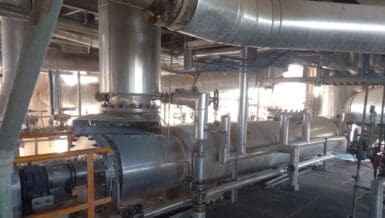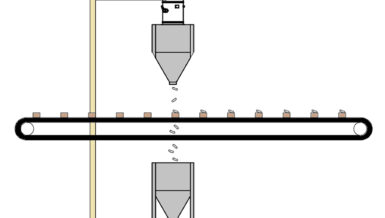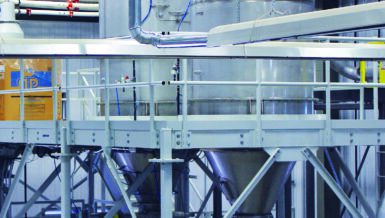In the food processing industry, walking onto the production floor with conveyor tubes winding this way and that, in and out of machinery can seem to visitors like they have stepped into a Dr. Seuss book or Willy Wonka and the Chocolate Factory movie.
For example, at a glance even industry veterans can be challenged to distinguish whether the conveyor tubes they see are screw (augur), pneumatic, vacuum, aeromechanical, tubular drag chain and disc or tubular drag cable and disc unless they are the plant engineer or maintenance crew. In fact, many specifiers, architects, engineers, and other professionals lack substantial technical or hands-on experience with such conveyors.
This knowledge gap can result in extreme consequences when delicate materials or precise blends must be reliably conveyed but instead, costly product destruction or inaccurate blends occur.
Misconceptions about tubular drag cable and disc conveyors will be the focus of this assessment, addressing six widely held viewpoints in the industry.
Tubular drag cable conveyors gently move product through a sealed tube using a coated, flexible stainless-steel drag cable pulled through on a loop. Solid circular discs (flights) are attached to the cable, which pushes the product through the tube without the use of air. These conveyors excel in transporting delicate, precise blends for a wide variety of food types in versatile layouts and configurations.
Misconception #1: These Conveyors are the Same as a Screw System
“One of the most common misconceptions is that tubular drag cable and screw conveyors are identical, which is far from the case,” says Karl Seidel, marketing director of Cablevey Conveyors, a mechanical conveyor manufacturer that serves the specialty food, coffee, powder, nut, and pet food markets.
Screw systems, also known as auger conveyors, typically utilize a helical blade that moves granular materials within a tube. However, augurs can cause product damage and compromise blends. So, the units tend to be an option when material integrity is not critical, such as when conveying food waste.
Seidel notes, “The key difference to look for is that augurs convey material with a helical screw. The transfer speed is directly proportional to the rotation speed of the screw. On the other hand, tubular drag cable conveyors transfer material between two discs pulled by a sealed cable and are designed to protect delicate products and blends.”
Misconception #2: Conveyors Are Not Designed to Protect Blends and Mixes
When transporting a blend of product with a conveyor system, maintaining a consistent mix ratio is essential, whether a fine powder, coarse mix, or larger variable-sized amalgams of different weights and shapes.
However, conventional conveyor systems are not specifically designed to precisely transport blends without changing the mix ratio. Various product material weights, sizes, and shapes can shift and disperse in open systems like bucket conveyors, and vibration can cause the blended product to shift throughout transport. Vacuum and pneumatic systems can cause smaller lightweight particles in a blend to move at different speeds than heavier or larger particulates, resulting in significant blend restructuring when the product reaches its discharge point.
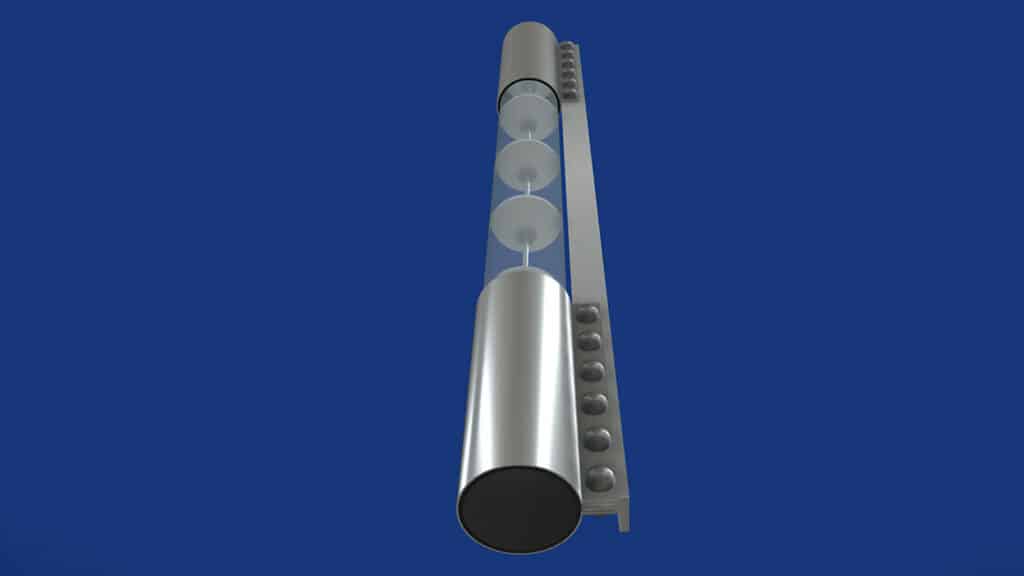
In contrast, tubular drag cable conveyors are engineered to maintain precise blend ratios, which can be important to food industry professionals from nutritionists to farmers feeding livestock, according to Seidel. As an example, the company’s engineers have resolved the issue with a completely enclosed, compartmentalized tubular conveyor system.
“Not unlike an endless succession of train cars, each space between solid circular discs holds a predefined volume of product. Based on the manufacturer’s specifications and requirements, engineers can calculate the optimal speed of the system, the most appropriate tube angles, and the proper construction design to guarantee their blended product remains consistent from input to discharge, even at high volumes,” says Seidel. His company has designed, engineered, and serviced enclosed cable and disc tube conveyors for 50 years in over 66 countries.
Misconception #3: Conveyors Cannot Carry Moist, Hot, or Frozen Material
Tubular drag cable systems like Cablevey’s convey food materials in a wide variety of forms and states including powdered, pureed, chopped, moist, hot, and frozen with throughput rates up to 80,000 pounds per hour. The systems can convey material with high moisture content such as soaked beans and chickpeas when some water is being conveyed along with the product.
While the tubular conveyors are constructed of plastic components, the standard units are designed to operate at 180° F (82° C) with a high-temperature option up to 230° F (110° C), so can receive the product from ovens, fryers, or dryers, according to Seidel. Even frozen products can be conveyed, although it is important that the temperature is controlled along the path, so no melting occurs with water freezing later in the system.
Misconception #4: Conveyor Footprint and Expansion Limitations
Some in the food industry do not consider tubular conveyors because they believe that the systems cannot fit within their facility’s available space or accommodate its layout, which may include significant inclines or elevation changes. However, this is not the case.
Modular systems like tubular drag cable conveyors are an excellent option for complex layouts that could require curves or changes in direction, according to Seidel.
“Tubular conveyors do not have to be installed at 90 degrees and can use angles so can go in between, around, above or below existing equipment or other obstacles. That is important for existing facilities that may not have the flexibility to move something out of the way,” says Seidel.
In addition, tubular conveyors are quite a space efficient. Seidel notes that to conserve space, the conveyor turnaround and its inlet can stand on end, so it is only one foot across instead of three. If conveyor discharge occurs best using gravity, tubing can be run through walls and discharge out of the building roof, which saves interior space.
Misconception #5: Cleaning Requires Dismantling and Extended Downtime
Between product changeovers, many traditional conveyor systems must be disassembled, cleaned, or soaked, and then reassembled – a labor and time-intensive process. However, this is not necessary for tubular conveyors.
With tubular conveyors dry, wet, and in-line cleaning options are available, according to Clint Hudson, Cablevey Conveyors Engineering Manager. Among dry options, brush boxes and air knives can clean the cable. Brushes and wipers can wash the tubes. To sanitize, a sponge soaked in sanitizer can be used without getting the system fully wet.
For the most thorough cleansing, the cable conveyor’s wet cleaning process internally washes the tube in several steps, starting with a water rinse followed by a foaming agent, a sanitizing rinse, and a final water rinse. Once the system is thoroughly flushed out, drying is achieved by attaching urethane wipers to the tubular conveyor’s discs, which “act like a squeegee” to remove any residual water.
Misconception #6: Conveyors are Indoor Installation Only
It is a misconception that tubular conveyors are only installed indoors. In fact, it is common to see portions of equipment extending outdoors. This may occur when conveying product from outside to inside such as when unloading raw material from a truck or railcar or loading finished product into similar transport. Materials may also travel from a feed mill to a production or packaging room which may be ten feet or even one hundred feet away.
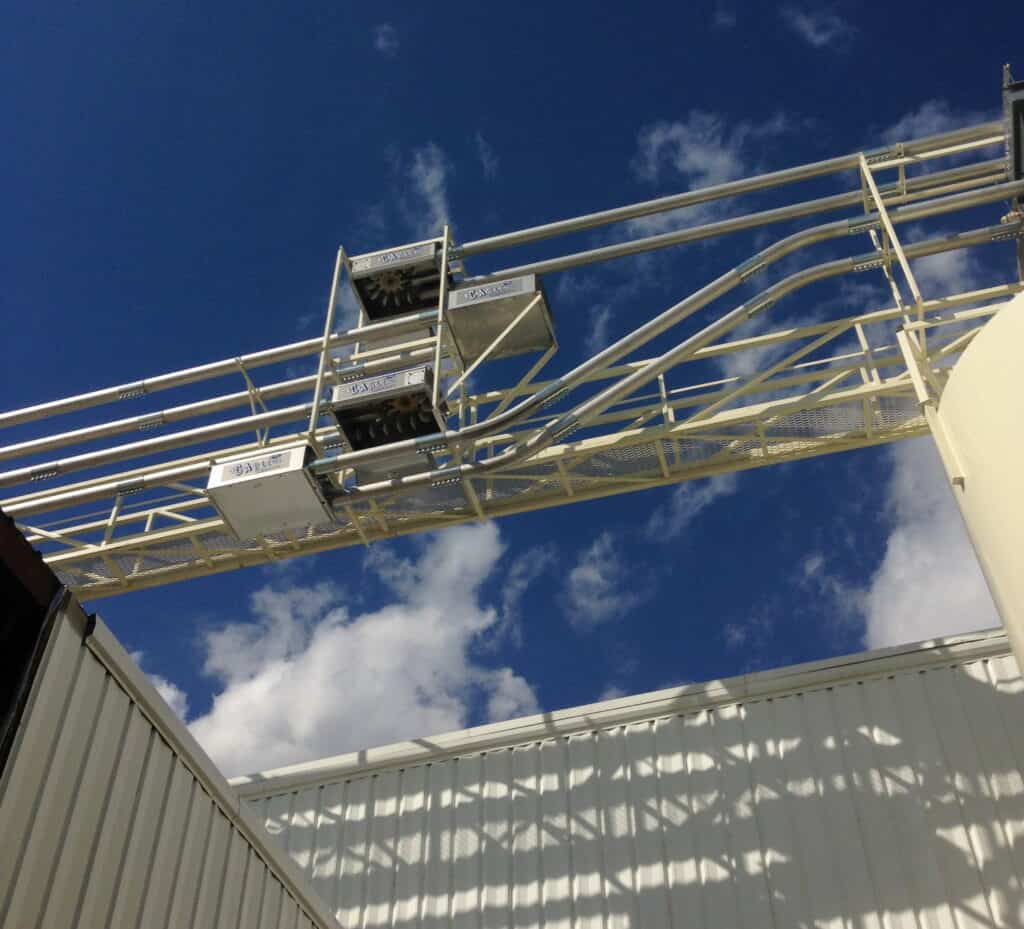
According to Hudson, when some of the equipment is utilized outdoors, and when the company is moving a moist product, it can be helpful to wrap the tubes in heat tape to prevent moisture from condensing or freezing in the tubes. The conveyor manufacturer can also provide a range of accommodations to account for the effects of wind, dust, rain, insects, and direct sunlight.
While first impressions of tubular drag cable and disc conveyors can evoke images of Dr. Seuss or Willy Wonka’s chocolate factory, the equipment has been carefully designed and engineered for industrial performance, reliably conveying delicate products and blends in a variety of conditions. With an understanding of the true potential of these conveyors, food industry professionals will be well-positioned to take advantage of the systems’ abilities to decrease downtime and increase quality production.






